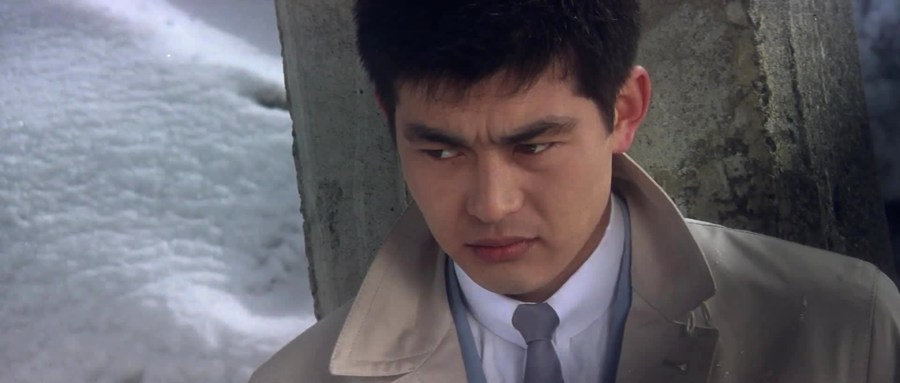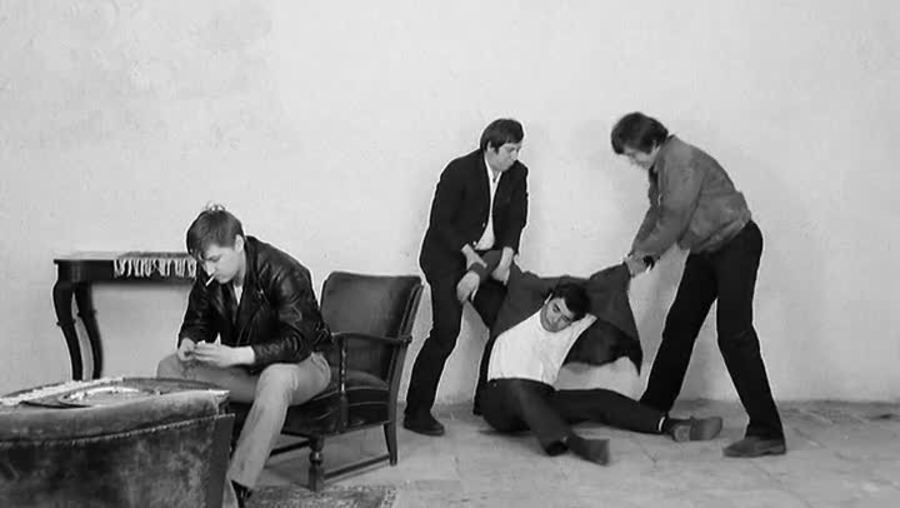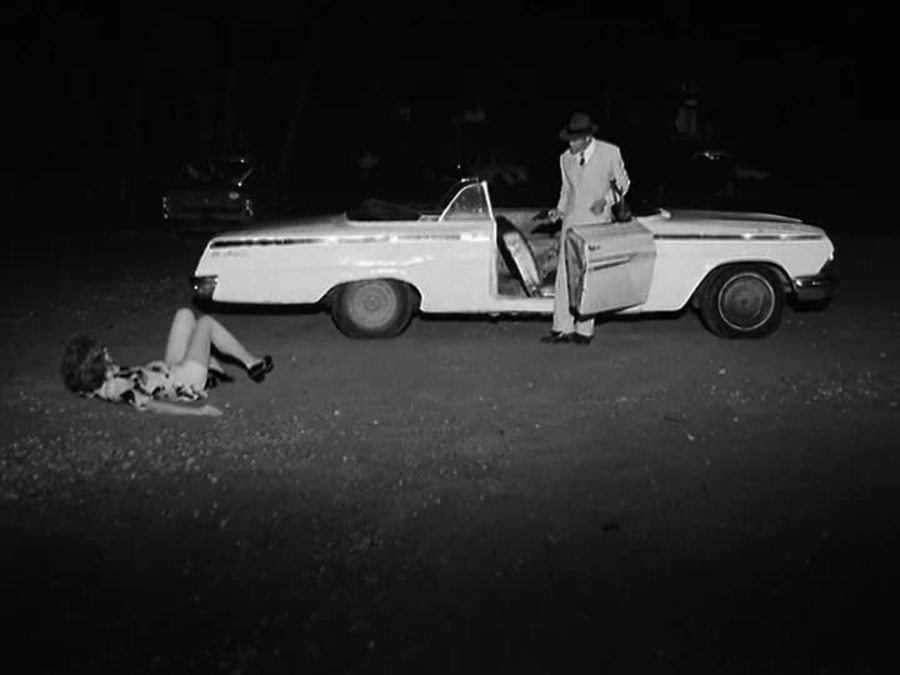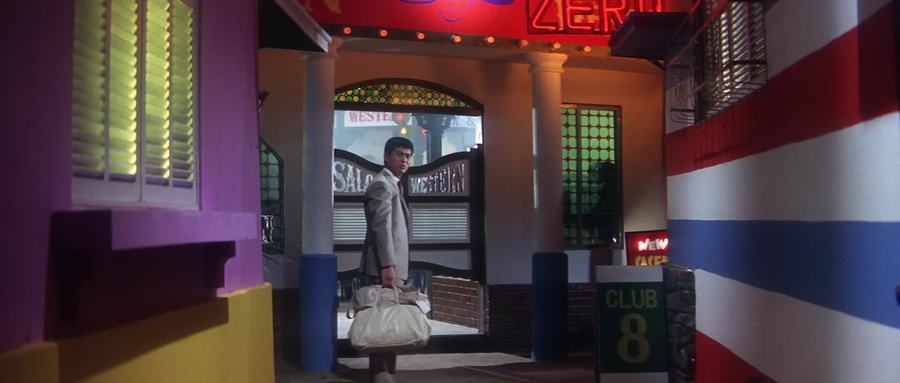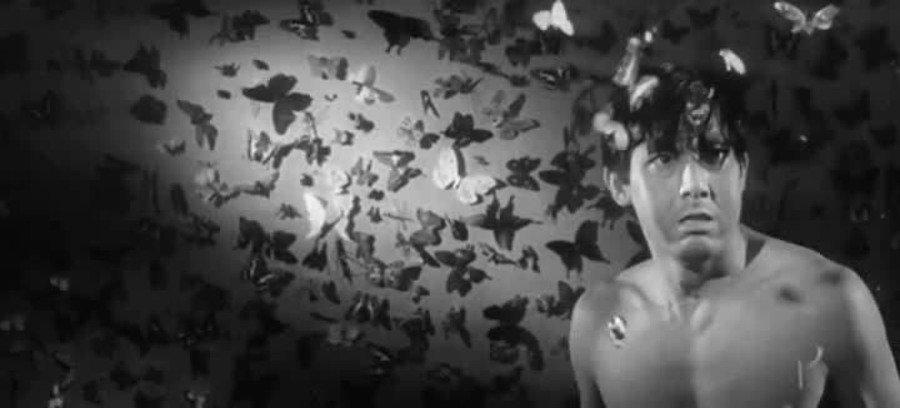American gangster movies, and especially those we now call film noir, have led a curious life outside their homeland. The French New Wave was populated with the iconography, aesthetics and archetypes of Hollywood’s “B” crime movies, and is arguably responsible for the genre’s appreciation in the annals of world cinema. Elsewhere in Europe, and in Asia, the noir saw its perhaps most striking, bizarre iterations in the hands of Rainer Warner Fassbinder and Seijun Suzuki, whose work distilled and amplified the peculiarities of the genre to the extreme, resulting in absurd, sometimes bordering on surreal, cinematic funhouses that continue to dazzle and surprise.
The Hollywood noir, which owed much of its photographic language to the Expressionism of early German cinema, found a sympathetic audience in Europe following World War II. Rainer Werner Fassbinder, born in 1945, in Bavaria, saw his share of American crime movies, as well as the French New Wave films that were fueled by their fascination with them. Active in Munich’s late 1960’s theater scene, he aspired to work in cinema. For his first feature, Love is Colder than Death, in 1969, he turned to the crime drama. There is a fantastic video of its reception at the Berlinale, wherein the audience boos and heckles enthusiastically, as Fassbinder ascends the stage, defiantly victorious. He directed two more Noir inspired films amongst the ten he made between 1969 and 1971, which comprise the early phase of his illustrious, somewhat notorious life as a filmmaker.
The American Soldier, the third in the this Noir trilogy, began its life as a theater piece based on Irving Lerner’s 1958 film, Murder by Contract. It concerns an American, Ricky, born in Munich, who returns there from Vietnam, where he fought in the war. His friend Franz (played by Fassbinder, reprising a character from Love is Colder than Death), asks “How was it Vietnam?” Ricky pauses before responding, simply, “Loud.” Ricky is hired to do a series of murders by three corrupt police officers, also finding time to visit his mother and younger brother. Karl Scheydt portrays Ricky as an exaggerated version of the male anti-hero cultivated in American crime cinema. Like a younger version of Eddie Constantine as Lemmy Caution in Jean-Luc Godard‘s Alphaville, Ricky is cartoonishly misogynistic, cold, and insouciant. When hired to kill a woman who happens to be his lover, he shoots her in the belly as they kiss. Fassbinder playfully subverts the the archetypes and Hayes Code sexual subtext of the Hollywood gangster movie, adding his own layers of homoeroticism and incest. Fassbinder said the films of his early career were either “cinema films,” in which he self-referentially riffed on genre movies, or “bourgeois films,” which where social critiques of West German society and culture. The American Soldier is perhaps the pinnacle of former, full of nods to his cinematic heroes; A hotel clerk is named Murnau, a bar is called the Lola Montes (Fassbinder published a list of his favorite movies a year before his death in 1982, which includes Max Ophuls’ film). It ends with a beautiful, drawn out tableau vivant set to the film’s theme song. “So Much Tenderness,” written by Fassbinder and his frequent musical collaborator Peer Raben, has ironically underscored a film in which there doesn’t appear to be much. Critical consensus places these early movies somewhat below Fassbinder’s later work, but The American Soldier displays the joy of an artist buzzing with the enthusiasm of creation, and the love of cinema.
Across the world in Japan, Seijun Suzuki was a director under contract at Nikkatsu Studios, where he made over forty movies. He was assigned scripts and actors for B movies, referred to as “program pictures,” which were presented with a higher budget A movie as part of a double feature. Suzuki made between two and six pictures each year, often only given one day for editing, and although he worked in other genres, he was particularly known for his yakuza action films, crime dramas focusing on the lives of Japan’s criminal underworld. By the mid 1960s, Suzuki was fighting the boredom and monotony of his assembly line production schedule, looking for ways to distinguish his films from the other directors working at the studio with the same actors. The results were inventive, and increasingly strange. 1966’s Tokyo Drifter was the culmination of his work with the prolific art director Takeo Kimura, with whom he’d been developing a lively visual style, one that had earned the director the ire of his bosses at Nikkatsu. He had been told to play it straight, and given a reduced budget to make Tokyo Drifter, intended to be a routine action movie about a reformed yakuza soldier trying to stay on the right side of the law. The result was anything but typical. A technicolor explosion of style akin to the Pop Art of the era, Suzuki and Kimura employ color in bold and unique ways, one sparkling cinemascope frame followed by another. “A man’s life bleeds away in crimson colors,” we’re told. In this film, it does so, remarkably.
Branded to Kill, from 1967, would turn out to be Suzuki’s final film for Nikkatsu. A truly bizarre movie, the plot focuses on a yakuza assassin in a love triangle with two women. Shot in widescreen black and white, it has the feel of classic film noir, albeit taken to new extremes of absurdity and overt sexuality. Jo Shishido plays the lead, a killer sexually aroused by the smell of boiling rice. He becomes obsessed with a beautiful femme fatale played by Annu Mari, who fills her apartment with dead butterflies. “My dream is to die,” she tells Shishido. Like Tokyo Drifter, Branded to Kill can be seen as a visual achievement in the rich tradition of Japanese design. Shots are delicately composed for impact; realism and continuity are secondary. An example of this can be seen when animated butterflies appear on the screen to represent Shishido’s obsession with Mari’s character.
Branded to Kill proved too much for Nikkatsu, which fired Suzuki following the film’s release. Suzuki successfully sued the studio, with which he had a contract, but the scandal resulted in him being effectively blacklisted from the Japanese movie industry for many years. Suzuki’s work was largely unseen in the west until the 1980’s, unlike the films of Akira Korusawa and other well-respected Japanese filmmakers. His influence can be seen in the films of John Woo, Takashi Miike, and Jim Jarmusch, who paid tribute to Suzuki in Ghost Dog: The Way of the Samurai, by mirroring a scene in which a killer shoots his victim from below through the drain of a sink. When interviewed, Suzuki likes to say that being a director was simply a way for him to earn money, and that he never aspired to be an artist. Watching these films, I’m not sure if I can believe that.

